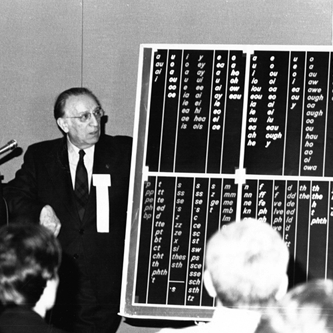What are Cuisenaire® Rods?
Cuisenaire® Rods are a collection of rectangular rods of 10 lengths and 10 colours, each colour corresponding to a different length. The smallest rod, a white centimetre cube, is 1cm long; the longest, the orange is 10 cm.
I witnessed a miracle in education, where there are so few!
-Dr. Gattegno on his first observation of Cuisenaire Rods being used by Georges Cuisenaire in the classroom.
Dr. Gattegno lectured in many countries and spread the word about Cuisenaire® Rods to teachers. His work with children and style of subordinate teaching with the rods demonstrated proven results. These experiences led him to produce a textbook series named ‘Mathematics with Numbers in Colour’, the rest, as they say, is history!
A Study Of A Possible Renewal Of Public Education - The Twin Parks School - C.S. 234 and C.S. 129, The Bronx, N.Y.
As I collected and prepared the writings which form this book I realized that they are an offering to everyone interested in education, for at least these reasons:
· They give evidence that there has been and perhaps there still is at least one Experimental School in the United States.
· They will confirm that a complex, decisive educational adventure can be set up, started and pursued by a relatively small number of educators who are determined to do something and clear about what they engage in.
They will be testimony to the possibility of getting things done quickly which ordinarily would require lengthy processes and red tape. Indeed, so many hurdles were removed because the proposal was attractive to many people in all sorts of positions who wanted to see such a school in operation and learn what was possible from it, that in only four months the school was under way.
Truly listening is perhaps the greatest gift a teacher can give. Think of the power of the teacher that influenced you the most. Perhaps even the one that got you to consider teaching as a career. You may realize that it was not necessarily the information which that teacher bestowed that got you hooked but more their power to listen and actually hear you.
Dr. Caleb Gattegno wrote what the ages of wisdom have told us about being a good listener. Not only does it create a more fulfilling life for those can master listening, but it can convey a sense of empowerment to those who experience being the subject of your listening.
“Listening is a component of true relating and is as much in our favor, to our advantage, as to that of the other or others. It shows us as much as it shows others, that as humans we know we have to take steps to affirm, to convey, our participation in a relationship we allow to involve us, to consume time in our life,” Dr. Gattegno wrote.
What Students Need Are More Questions Than Answers
We’ve often heard the expression: “there are no bad questions.” But could this be true?
World-leading educator Dr. Caleb Gattegno spent a great deal of time pondering just this question; and he saw within the answer the key to obtaining new and higher levels of knowledge in easier and more efficient ways.
The Well-Crafted ‘Elephantine’ Challenge
As educators are forced more and more to compete with all kinds of media for their students’ attention, it might be worthwhile to steal a page from their competitor’s book. There are unspoken imperatives media creators live by, especially the ones who create those highly addictive video games. What they are striving for most of all is an irresistible challenge.
A challenge is a much more superior cognitive activity than memorization or drilling. So effective is a well-crafted challenge that people will generally accept them without even asking how they work. For instance, how many people spend a lot of time studying or memorizing how a video game works? They generally launch right into the game and figure it out for themselves.
Luckily, a lot has been done in the area of developing and executing well-crafted educational challenges. In fact, learning by challenges has the same exciting and exhilarating effects as actually creating or discovering an idea or a piece of knowledge for the very first time.
![History of Cuisenaire Rods [from Learning Resources]](https://images.squarespace-cdn.com/content/v1/5c296dce9772aee125feecd7/1547592235538-7OITRVTIBZDG4TDWZR1K/3.5.2.jpg)




